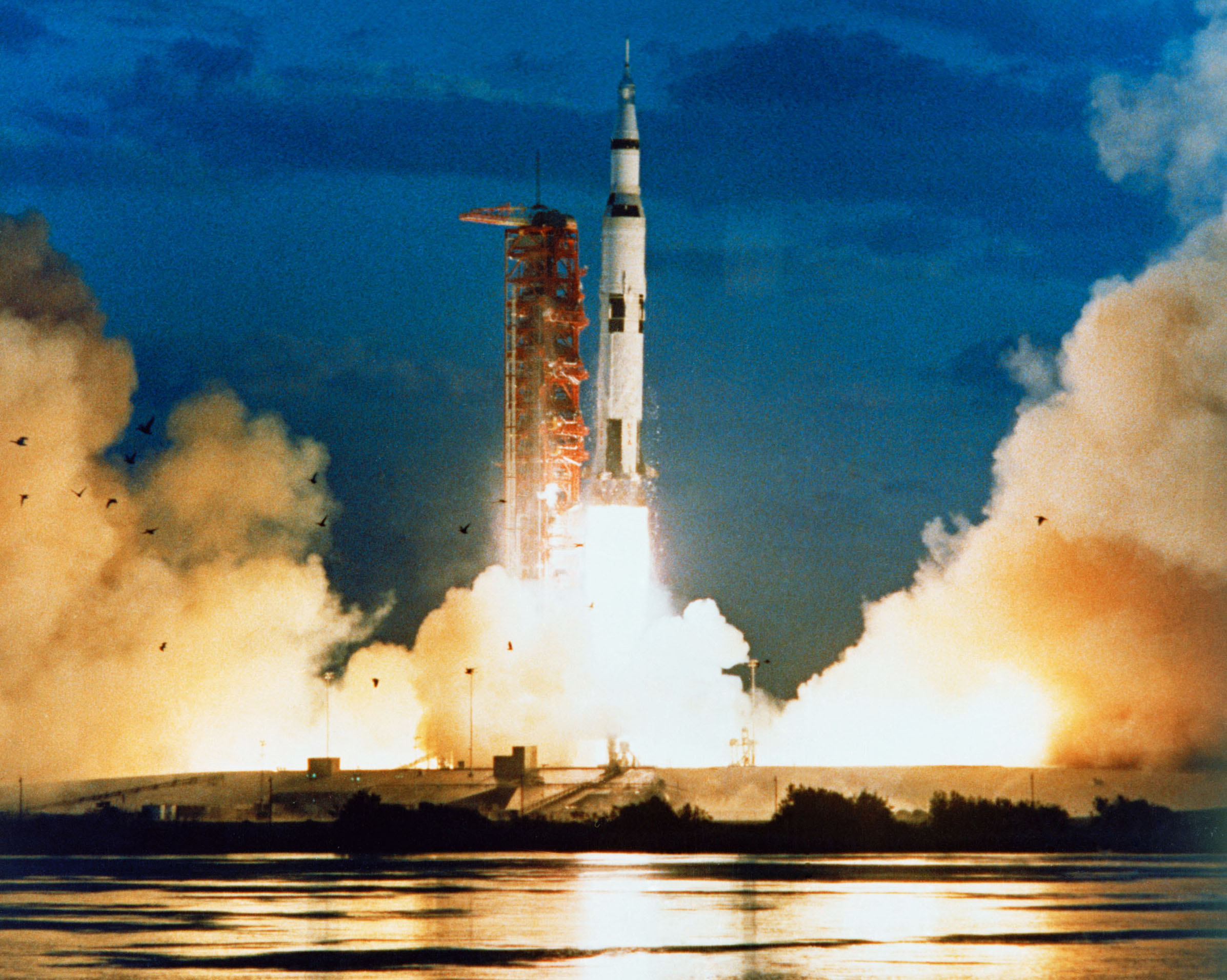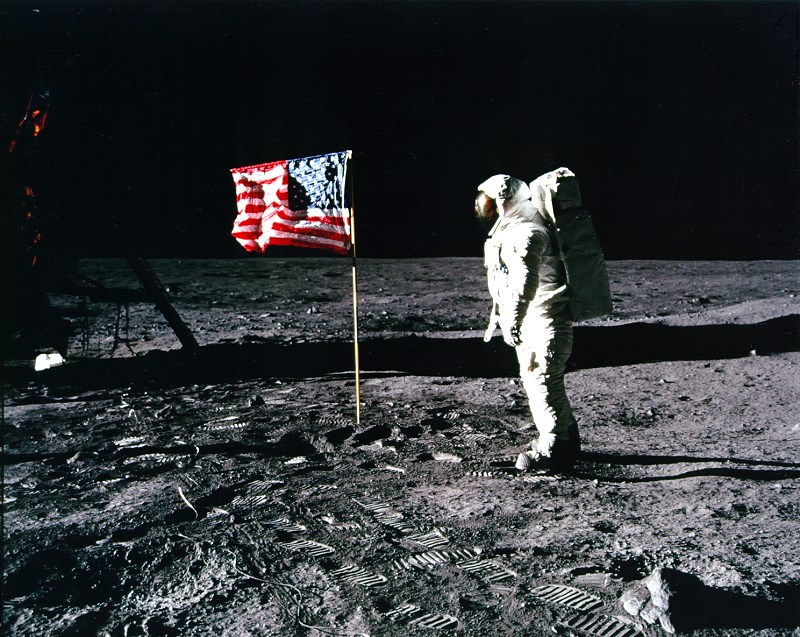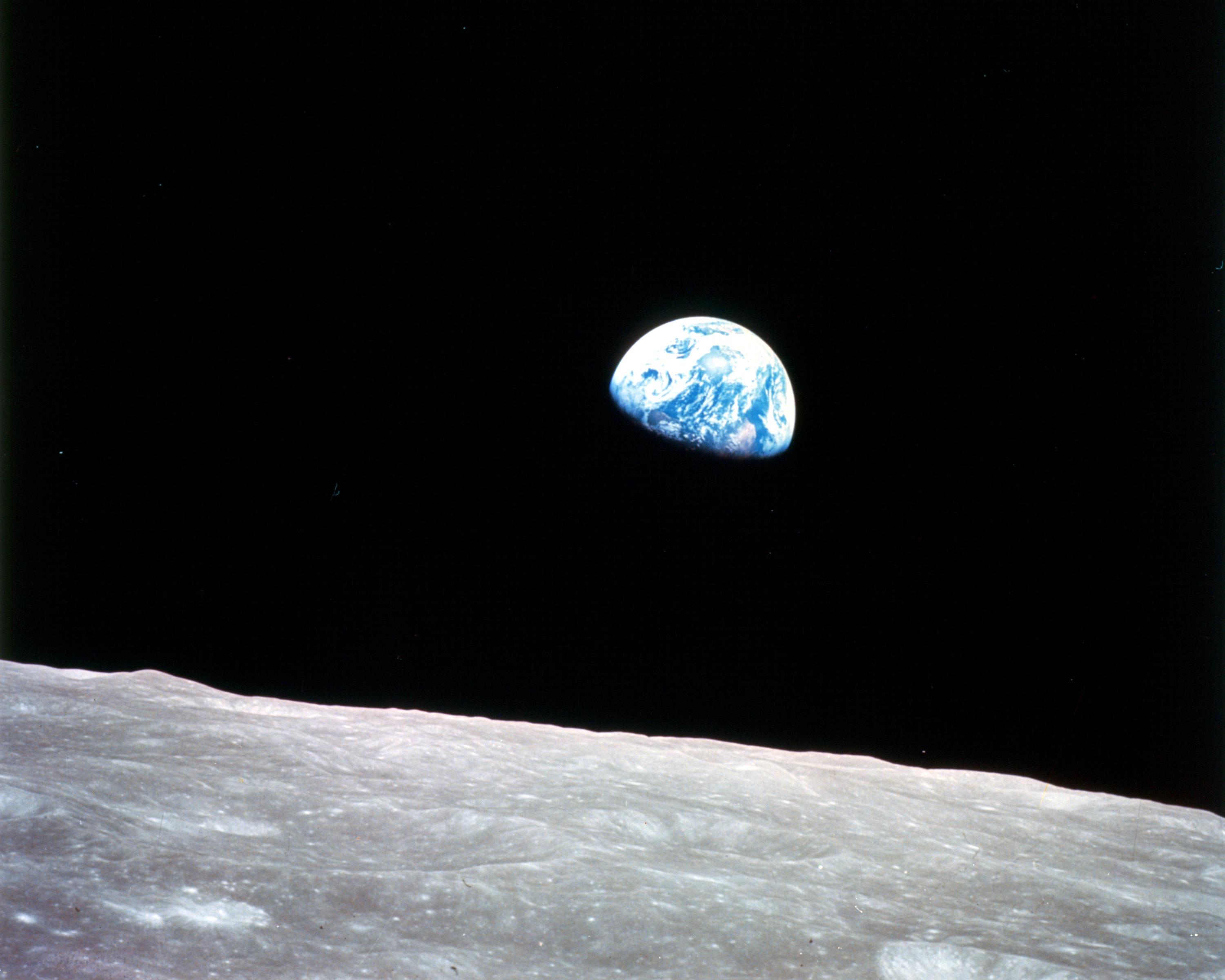The Apollo Program: How NASA sent astronauts to the moon
An overview of the history and accomplishments of NASA's Apollo missions.

The Apollo program was the name of NASA's project to land humans on the moon in the 1960s and early 1970s. With the success of Apollo 11 in 1969, which put astronauts on the lunar surface for the first time in history, the U.S. was able to declare victory in the space race against the Soviet Union during the Cold War.
Beginning in 1961, the Apollo program consisted of 11 total spaceflights; four of those tested equipment, and six of the other seven flights landed people on the moon, according to NASA. The first crewed flight occurred in 1968, and the final mission occurred in 1972.
By the time the Apollo missions came to an end, 12 astronauts had walked on or driven over the moon's surface, conducting scientific research and snagging rocks to bring back to researchers on Earth. These samples are still being used to make new discoveries more than 50 years after they were collected.
Related: The Moon on Earth: Where are NASA's Apollo lunar rocks now?
The Apollo program grew out of the space race, a contest that began in 1957 between the capitalist U.S. and communist Soviet Union over superiority in space. With the Russians ahead during the start of the race, U.S. President John F. Kennedy challenged the newly created NASA to land men on the moon and return them safely in his famous 1961 "Moon Speech" at Rice University in Texas.
Preparation for Apollo came from NASA's Mercury program, which ran from 1959 to 1963 and sent one-person crews into orbit to see if humans could survive and work in space. That was followed by the agency's Gemini program, which ran from 1962 to 1966 and included two-person missions that tested many maneuvers and components critical for landing on the moon.
The Apollo program required a monumental effort, employing roughly half a million people in the United States, according to SpaceFlight Insider. The program cost a total of $28 billion over its lifetime, or approximately $283 billion when adjusted for inflation, according to the Planetary Society.
Breaking space news, the latest updates on rocket launches, skywatching events and more!
NASA developed several novel vehicles specifically for Apollo, most famously the Saturn V rocket. One of the biggest launch vehicles ever flown, the Saturn V was as tall as a 36-story building and consisted of three stages.
Atop the rocket sat the Apollo command module, a three-person capsule that held the astronauts traveling to the moon and back. The inside of the vessel had about as much room as the interior of a car, making for fairly cramped traveling conditions during the roughly week-long lunar voyages.
Finally, there was the lunar module, which carried two astronauts down to the lunar surface and landed on spindly legs. Once surface excursions were over and astronauts had climbed back inside, the lunar module's top portion fired its engine and ascended to the command module for the return to Earth.
Related: NASA's 17 Apollo moon missions in pictures
The first Apollo tests took place using the Saturn I rocket, a smaller version of the Saturn V that was used to test out the engines and necessary hardware for the program. The first astronauts were set to fly on Apollo 1, but during a launch rehearsal a wiring spark generated a fire that blazed throughout the command module, which resulted in the tragic deaths of the three-person crew.
The failure was a turning point for the program, resulting in extensive redesigns to the command module. It was more than 18 months before NASA tried to send more humans into space again. During that time, the agency launched six uncrewed missions to investigate the performance of the Saturn V rocket.
The first successful crewed launch during Apollo 7 marked the next milestone in the program’s history. Though astronauts remained in Earth orbit for its duration, the mission validated the safety of sending people to space using the Saturn V rocket.
Apollo 8 was the first mission to send astronauts all the way to the moon, though the crew did not land on its surface, only circled it. During the event, which occurred on Christmas Eve in 1968, the crew took turns reading from the Book of Genesis and snapped the iconic photo of our planet known as "Earthrise," which is credited with helping inspire the environmental movement.
The culmination of Apollo was the Apollo 11 mission, when the first astronauts set foot on the moon. Astronauts Neil Armstrong and Buzz Aldrin descended to the lunar surface on July 20, 1969, while Michael Collins flew the command module Columbia over it. Armstrong uttered his iconic words, "that's one small step for man, one giant leap for mankind," as he stepped onto the moon. The astronauts spent 21 hours and 36 minutes on the surface before returning to the command module.
Related: Moon-landing hoax still lives on, 50 years after Apollo 11. But why?
Apollo 13 is remembered as the flight that was saved from near disaster through hard work and clever engineering workarounds. Though the crew never landed on the moon, their travails were dramatized in the award-winning movie "Apollo 13" about their misadventure.
By the early 1970s, the high price of the Apollo program and waning public interest led to its cancellation. President Richard Nixon and legislators in Congress decided to redirect Apollo's funding elsewhere, like the Vietnam War. Apollo 17 was the final mission of the program, and the first to include a scientist, geologist Harrison "Jack" Smith, who helped identify important rock specimens to bring home.
NASA is currently planning its Artemis program, which is intended to bring people — including female crew members — to the moon for the first time since the end of Apollo. Artemis aims to have its first landing in 2024 and build toward a sustained human presence on the moon by 2028.
Here's a brief summary of each Apollo mission:
Apollo 1 — Jan. 27, 1967. Astronauts Virgil "Gus" Grissom, Edward White and Roger B. Chaffee had all been veterans of NASA's Mercury or Gemini programs. A disaster involving the highly oxygenated air inside their capsule and a stray spark, along with the vessel's hatch being difficult to open from the inside, resulted in the death of all three men.
Apollo 4 — Nov. 9, 1967. Uncrewed first launch of NASA's enormous Saturn V rocket.
Apollo 5 — Jan. 22, 1968. Uncrewed mission that brought the lunar module to space for the first time.
Apollo 6 — April 4, 1968. Final uncrewed mission of the Apollo program. The launch was designed to test the ability of the Saturn V to inject astronauts into a lunar trajectory. Severe vibrations of the rocket during launch caused the mission to be only partially successful.
Apollo 7 — Oct. 11, 1968. Astronauts Walter M. Schirra, Donn Eisele and R. Walter Cunningham were the first Apollo crew to go into space. Rather than head toward the moon, the astronauts spent 11 days in Earth orbit testing various components of their command module.
Apollo 8 — Dec. 21, 1968. Astronauts Frank Borman, James Lovell and William Anders became the first humans to leave low-Earth orbit, heading on a trajectory that took them around the moon and back to our planet. Their historic flight happened on an accelerated schedule. NASA officials made a last-minute decision to head toward the moon after only a single crewed mission around the Earth in order to quickly demonstrate technological superiority over the Soviet Russians.
Apollo 9 — March 3, 1969. Astronauts James McDivitt, David Scott and Russell "Rusty" Schweickart remained in Earth orbit during their 10-day mission, testing out procedures to dock their command module with the lunar module that would be critical for landing on the moon.
Apollo 10 — May 18, 1969. Astronauts Thomas Stafford, John Young and Eugene Cernan got extremely close to landing on the moon. Their mission involved flying to our natural satellite and bringing the lunar module to within about 50,000 feet (15,000 meters) of the moon's surface, a mission that served as a dress rehearsal for Apollo 11.
Apollo 11 — July 16, 1969. Astronauts Neil Armstrong, Edwin E. "Buzz" Aldrin and Michael Collins did what no humans had ever done before: reach the moon and have two people walk over its surface. Armstrong and Aldrin left historic boot-prints that still remain in the lunar regolith.
Apollo 12 — Nov. 14, 1969. Astronauts Charles "Pete" Conrad, Alan Bean and Richard Gordon survived two lightning strikes during liftoff and reached a different spot on the moon than Apollo 11, touching down in a place called the Ocean of Storms. Moonwalkers Conrad and Bean visited NASA's Surveyor 3 probe, which had landed on the moon two years prior.
Apollo 13 — April 11, 1970. Astronauts James Lovell, Fred Haise and John Swigert suffered after an oxygen tank exploded 56 hours into their flight to the moon, crippling the mission. The crew was forced to scramble into the lunar module and use it as a lifeboat, circling the moon without landing and then returning safely to Earth. This was Lovell's second time around the moon, the first being on Apollo 8.
Apollo 14 — Jan. 31, 1971. Astronauts Alan Shepard, Edgar Mitchell and Stuart Roosa are best remembered for having hit golf balls on the moon. Shepard was the first American in space but he and his co-pilots collectively had some of the least flight experience of all the Apollo astronauts, leading them to be lovingly dubbed "the three rookies."
Apollo 15 — July 26, 1971. Astronauts David Scott, James Irwin and Alfred Worden were part of the mission that carried the lunar roving vehicle, often known as the moon buggy, for the first time to the moon. Their mission emphasized geological work, and the crew was trained to identify different rocks and formations that would help scientists on Earth piece together the history of our planet and its natural satellite.
Apollo 16 — April 16, 1972. Astronauts John Young, Charles M. Duke and Thomas Mattingly landed at the Descartes highlands and searched for volcanic rocks during their mission. Confounding scientists' expectations, they found few volcanic samples, indicating that the area had not been formed through volcanic action.
Apollo 17 — Dec. 7, 1972. Astronauts Eugene Cernan, Harrison Schmitt and Ronald Evans became the final people yet to ever reach the moon. Their mission continued the focus on science, with the astronauts spending the most time on the lunar surface and picking up the largest samples of any in the program.
Additional resources:
- Read more about the Apollo missions from the Smithsonian Air and Space Museum.
- Check out hundreds of incredible images and videos of the Apollo missions in NASA's photo library.
- Watch videos commemorating each Apollo mission, compiled by NASA.

Adam Mann is a journalist specializing in astronomy and physics stories. His work has appeared in the New York Times, New Yorker, Wall Street Journal, Wired, Nature, Science, and many other places. He lives in Oakland, California, where he enjoys riding his bike. Follow him on Twitter @adamspacemann or visit his website at https://www.adamspacemann.com/.




